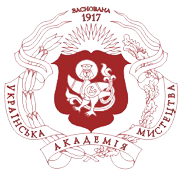BASIC SKILLS OF HANDWRITING IN THE PROJECT WORK OF GRAPHIC DESIGN STUDENTS
DOI:
https://doi.org/10.32782/2411-3034-2023-34-12Keywords:
graphic design, calligraphy, flat nib, handwritten font, typef ace, graphic technique, poster.Abstract
Abstract. The purpose of this article is to highlight the methodology of initial assignments in handwriting and calligraphy for the specialization of graphic design. To systematize the co-authors' experience in teaching handwriting and to outline a common vision of the directions of realization of calligraphy in the professional education of graphic design. Methods. The study is based on the methods of observation, experimentation and systematization, which made it possible to structure the methodology for teaching basic handwriting skills and applying them in students' project activities. Results. By analyzing the applied resource of handwritten font, the path from basic exercises to the implementation of a specific design project is traced. The results of the study accumulate the co-authors' many years of experience in teaching handwriting and calligraphy and outline a common vision of the directions of calligraphy implementation in graphic design professional education. Conclusions. The creation and development of a national font school is especially relevant for our time. A font is one of the most essential tools of a graphic de signer, which is used in all areas of his or her activity. Therefore, it is worth studying a typeface from its handwritten basis in order to use the full potential of its capabilities, which will help to explore its place in the overall development of Ukrainian design. If the technique of execution, the craft level of first-year students often requires more practice and improvement, then creative solutions, courage in the interpretation of topics, and the found figurative language demonstrate the creative level of students. Also, students acquire the ability to competently imitate calligraphic writing with the help of other means, computer programs, etc., which is an important and valuable experience in further work with literature or the development of typefaces. In general, to look at your work with letters more critically. This combination of course tasks contributes to the improvement of professional training and allows for the successful implementation of creative ideas of a future graphic design specialist.
References
Семченко П. А. Основы шрифтовой графики. Минск : Вышейшая школа, 1978. 97 с.
Шпак О. Опанування каліграфії у підготовці майбутніх фахівців графічного дизайну. Мистецтво та освіта. 2021. № 4. С. 48–50.
Мітченко В. Лігатура в українських рукописних шрифтах XI–XIX ст. Українська академія мистецтва : дослідн. та наук.-метод. пр. 2009. Вип. 16. С. 245–253.
Іваненко Т. О. Шрифтовий дизайн: основи : навч. посіб. Харків : ХДАДМ, 2019. 144 с.
Чекаль О. Г. Каліграфічна спадщина Сковороди на роздоріжжі між європейським, грецьким та слов’янським скорописом XVIII століття. Григорій Сковорода і ми українці: диво першого кроку і сила ініціативи : колективна монографія / за заг. ред. Ю. Бойчука, М. Култаєвої. Харків : Харків. нац. пед. ун-т імені Г. С. Сковороди, 2023. С. 266–285.
Johnston E. Writing and illuminating, and lettering. 8-th edit. London : Colchester and Eton, 1917. 510 c.
Мітченко В. Каліграфія. Взаємовпливи шрифтів. Теорія і практика. Кирилиця і латиниця. Історія і сучасність. Київ : Лаурус, 2018. 288 с.
Noordzij G. Kreska. Teoria pisma / przekład M. Komorowska. Kraków : d2d.pl, 2014. 88 c.
Лаптон Е., Філліпс Дж. К. Графічний дизайн: Нові основи. 2-ге вид., змінене та доп. / пер. з англ. І. Михайлишена. Київ : ArtHuss, 2020. 264 с.




